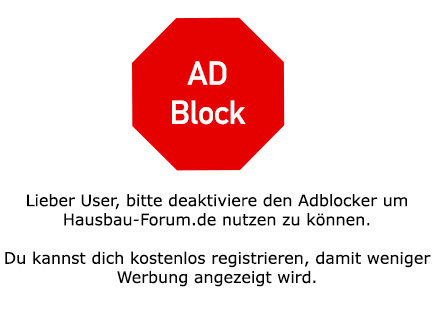KlaRa
2023-02-08 10:45:58
- #1
I would like to speak up on this topic after a long period of restraint.
If you look at the product designation, this type of flooring should be classified under laminate floor elements.
"Avatara design floors are characterized by the highest quality made in Germany. (Personal note: Meaningless!)
All Avatara design floors come with a 20-year warranty for residential use and a 10-year warranty for commercial use."
I am not a lawyer, but my professional experience shows me that the definition of "warranty" carries more legal weight than "merely" the term "guarantee" (which, however, was not specified here).
Because the term "warranty" applies regardless of use, for guarantee the contractually stipulated use (for example, usual residential conditions but also a sufficiently dimensioned dirt-trapping mat) is required for recognition of the complaint. This must be proven by the claimant – an almost impossible task, especially over a longer period. Moreover, in the case of scratches, among other things, the continuous use, i.e., use, of a dirt-trapping mat must be proven. How is that supposed to work, please??
With "warranty," the matter looks different again!
Recommended procedure:
Before taking on the cost of legal proceedings or legal counsel, one should definitely have checked whether the flooring meets the requirements arising from DIN EN 13329.
This can be checked, for example, on an uninstalled element. Be careful: some manufacturers work with institutes that issue the certification. Don’t hit the dog that protects you...
However, when taking sample material from the installed area, caution is necessary again, as the conditions and requirements according to DIN EN 13329 only apply to the delivery condition of floor elements!
Here, only the opinion of the publicly appointed expert for this type of flooring helps, whether the results determined by a test on uninstalled elements also apply to those already installed.
To put it briefly once more:
1. What is written in the product data sheet is decisive! There, the binding load profiles are specified.
2. No legal effort without knowing the facts through testing the disputed material. These are the circumstances in connection with the floor elements. Few people know that scratches must be clearly distinguished from "optical markings." What is the difference? Well, scratches can be marked by running a fingernail at right angles over such a structure. If one catches, it is a scratch. If it does not catch, it is an "optically visible marking."
------------------
Regards to everyone: KlaRa
If you look at the product designation, this type of flooring should be classified under laminate floor elements.
"Avatara design floors are characterized by the highest quality made in Germany. (Personal note: Meaningless!)
All Avatara design floors come with a 20-year warranty for residential use and a 10-year warranty for commercial use."
I am not a lawyer, but my professional experience shows me that the definition of "warranty" carries more legal weight than "merely" the term "guarantee" (which, however, was not specified here).
Because the term "warranty" applies regardless of use, for guarantee the contractually stipulated use (for example, usual residential conditions but also a sufficiently dimensioned dirt-trapping mat) is required for recognition of the complaint. This must be proven by the claimant – an almost impossible task, especially over a longer period. Moreover, in the case of scratches, among other things, the continuous use, i.e., use, of a dirt-trapping mat must be proven. How is that supposed to work, please??
With "warranty," the matter looks different again!
Recommended procedure:
Before taking on the cost of legal proceedings or legal counsel, one should definitely have checked whether the flooring meets the requirements arising from DIN EN 13329.
This can be checked, for example, on an uninstalled element. Be careful: some manufacturers work with institutes that issue the certification. Don’t hit the dog that protects you...
However, when taking sample material from the installed area, caution is necessary again, as the conditions and requirements according to DIN EN 13329 only apply to the delivery condition of floor elements!
Here, only the opinion of the publicly appointed expert for this type of flooring helps, whether the results determined by a test on uninstalled elements also apply to those already installed.
To put it briefly once more:
1. What is written in the product data sheet is decisive! There, the binding load profiles are specified.
2. No legal effort without knowing the facts through testing the disputed material. These are the circumstances in connection with the floor elements. Few people know that scratches must be clearly distinguished from "optical markings." What is the difference? Well, scratches can be marked by running a fingernail at right angles over such a structure. If one catches, it is a scratch. If it does not catch, it is an "optically visible marking."
------------------
Regards to everyone: KlaRa
